It’s a problem familiar to most hoteliers - your direct channel is visible on metasearch and you’re ready to start driving bookings, but price undercutting from OTAs is pushing traffic away from your website. With 61% of all direct prices that appear in meta auctions being undercut by at least one other OTA, this is not something you want to take lightly.
It’s tempting to lay the blame for poor performance on your metasearch provider, but this overlooks the central role hoteliers must play in taking control of their rate distribution and improving their metasearch parity. A strong metasearch campaign requires the cooperation of both the hotelier and provider.
In this article we’ve gathered some top tips from our recently launched Ultimate Guide to Hotel Metasearch to help you tackle price undercutting from OTAs and ensure your provider is in the best position possible to drive strong performance. Interested in learning more about what you can do to drive more direct bookings from this channel? Read through to the bottom and download the full guide by completing the form.
Make sure you’re monitoring the right price sources
Before you can get serious about tackling price undercutting on metasearch, it’s critical to get a routine in place for monitoring OTA rates. We’ve emphasized before that monitoring prices on metasearch is a different ballgame to doing this on your booking engine. Given that meta is an extremely price sensitive channel, you’ll need to keep track of all participating OTAs (even ‘random.com’ OTAs you may never have heard of). You’ll also need to analyze rates in a way that reflects how customers are actually seeing your direct price.
Doing this manually is an impossible task given that different customers are seeing different metasearch results all the time. That’s why leveraging the right technology is so crucial. Triptease’s newly launched Metasearch Parity Insights dashboard allows you to easily see how often you’re being undercut on metasearch, analyzing every impression your direct price receives. The dashboard provides critical insights that can help you drive more direct revenue, with features such as live reporting on your most frequent undercutting OTAs and how they’re impacting your click-through rate and booking volumes.
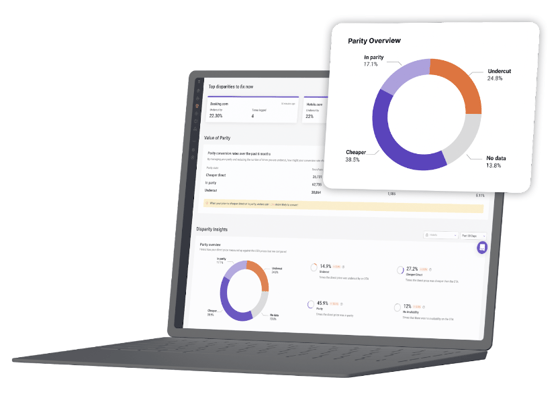
The Triptease Metasearch Parity Insights dashboard provides a comprehensive overview of how parity is impacting your metasearch performance.
But are all the OTA rates analyzed by the Metasearch Parity Insights dashboard accurate? We often hear hoteliers complain about OTAs that display incorrect rates. Some OTAs display rates for the wrong rooms - and even for the wrong properties - making them appear cheaper to customers. We’re also seeing an increase in ‘bait and switch’, the situation where a displayed rate on metasearch is not available to book when you click through. This is especially common on smaller ‘random.com’ OTAs.
Is it still important to tackle these inaccurate rates? The answer is absolutely yes. This is still a form of price undercutting and it plays just as big a role in driving traffic away from your website and reducing direct booking volumes. In what follows we’ll be sharing some top advice to help you take back control of your distribution and improve your rate parity on metasearch, even against rogue OTA activity.
Take back control of your rate distribution
Confronting OTAs that repeatedly undercut your direct price on metasearch is important for driving change. But remember that price undercutting may be symptomatic of deeper problems with your rate distribution. It’s critical to pay attention to this too.
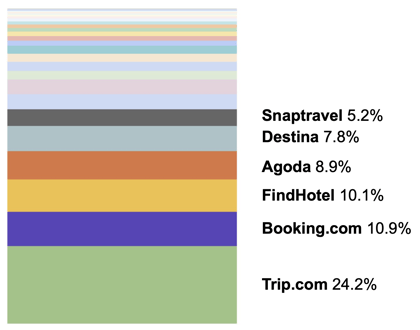
The most frequent undercutting OTAs on metasearch in the EMEA region - graph presented at the Triptease Direct Booking Summit Berlin (July 2022).
Most of the undercutting activity we’re seeing on metasearch is coming from smaller ‘random.com’ OTAs that source their rates from third-party wholesalers and their affiliates. If you have access to the Metasearch Parity Insights dashboard, take a look and see which OTAs are undercutting you most frequently - how many of these do you actively work with? If your rates are being advertized by non-contracted OTAs, this is a clear sign that something in your distribution has gone wrong. Here’s what you can do to start taking back control.
Be selective about the distribution partners you work with
Always aim to be as selective as possible when choosing distribution partners and stick to those who will be most impactful for your goals. Work with partners who are easy to do business with, and make sure you tighten your distribution clauses so that you’re clearly defining rate structures, package rates, opaque rates and violation penalties. The more selective you are with who you work with, the more control you will have over your distribution.
Educate your customers about third-party booking sites
Rogue OTAs are not only a threat to your direct booking revenue. They also pose a significant risk to the customers who book with them - such as turning up to your hotel thinking they have a booking when there is no record of this anywhere on your part. This in turn can cause long-term damage to your brand. As a hotelier, you should be committed to improving customer education about the risks involved in booking with third-party sites. Consider placing a banner on your hotel website explaining that booking direct is always the safer option.
Conduct test bookings to identify rate leakage
Test bookings can help you find out where OTAs are getting your rates from. When conducting a test booking, you should be assessing what the booking shows up as in your property management system (PMS). If you’re unsure where to start, search for your property on metasearch to see who is selling your rates, or use the Metasearch Parity Insights dashboard to determine who your most frequent undercutting OTAs are. When giving rates to partners, try to use different names for the same rate to help you easily identify where rates are leaking from. When the rate shows up in your PMS, you’ll be able to easily correlate the name with the partner it was given to.
Reduce allotments for OTAs on key dates
If you know that demand for your hotel goes up in certain instances, be strategic with allotting rates to OTAs at these times. By reducing allotment, OTAs will run out of availability before your direct channel. This is a great way to eliminate the source of rate parity problems when it matters most and immediately drive up your direct bookings.
.png?width=560&height=332&name=Lead%20time%20(days).png)
.png?width=560&height=344&name=Stay%20length%20(days).png)
Undercutting behavior from Agoda, Booking.com, Findhotel and Trip.com based on lead times and stay lengths. This data reflects average undercut rates for Triptease hotels in the EMEA region (2022).
Ramp up your direct booking incentives for guests
Monitoring prices and holding OTAs to account are critical to improving your rate parity on metasearch, but there’s plenty you can do as well to make sure you’re providing the right direct booking incentives to potential guests. Here are some steps you can take.
Use member rates and strike-throughs
On Google Hotel Ads, hotels can display discounted member rates in a unique way to better market their inventory. These rates may be offered to meta users who are willing to sign up for your membership program. When they click on the rate, users will be taken to your booking engine where they can sign up to receive the discount.
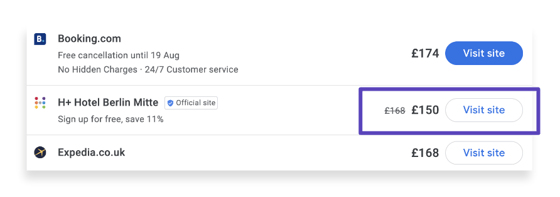
H-Hotels uses member rates and strike-throughs to ensure their direct price is always at least 10% cheaper than OTA rates.
Hotels can choose whether to make these member rates visible or invisible. A visible member rate will appear in the meta results beneath a ‘strike-through’ containing the more expensive rate (see the H-Hotels example on the right). An invisible member rate will contain a ‘get price’ option.
Submit your callouts on Google Hotel Ads
Callouts are unique to Google Hotel Ads. They allow you to submit a selection of short messages to your customers that may be displayed directly beneath your price listing in the metasearch results. This could include special offers and other incentives to book direct.
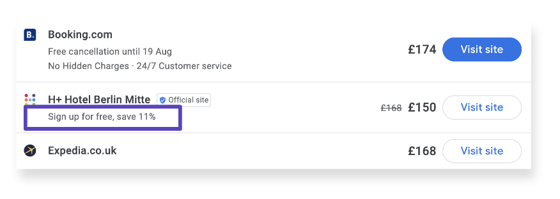
H-Hotels uses callouts for their direct price to help them market their inventory.
It’s important to bear in mind that Google’s process for displaying callouts is fairly random, so hoteliers have little control over which callout messages get displayed and to whom. Best practice for callouts is that they should be short, clear and benefit-driven.
Some examples include:
- Free cancellations up to 24hrs before check-in
- Complimentary breakfast when you book direct
- Free WIFI connection available at the hotel
Offer a non-refundable rate to direct bookers
Free cancellations and flexible bookings have become the norm in the post-pandemic world. But many hotels are now offering cheaper, non-refundable rates to reduce their high cancellation rates. This is also a great direct booking incentive for guests. If a non-refundable rate is not an option, consider a ‘without-breakfast’ rate.
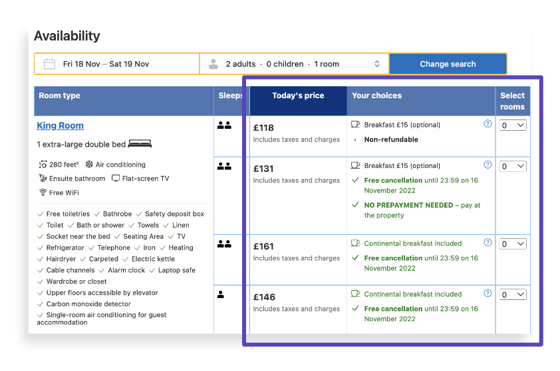
Example of how Booking.com offers different rate categories based on breakfast and cancellation flexibility.
Non-refundable rates come with a host of other benefits besides incentivizing guests to book direct, such as:
- Reduces cancellations
- Improves revenue management
- Deters guests from overbooking
- Improves cash flow with upfront payments
- Reduces your number of arrears
- Creates less damage to your brand than other kinds of discounts
Inflate the rates you send to OTAs
Use your channel manager to inflate the rates you send to OTAs by a large enough margin to make up for the average amount they are undercutting by. Whether this is possible will depend on how your contracts with OTAs are set up. If you’re both committed to a rate parity clause (which tends to be quite common across North America), then inflating the rates you give to OTAs will be off the table. In this case you may wish to use a member rate to ensure you’re offering a better deal.
Make sure any special rates given to OTAs are reflected in your direct price
If you have sent discounted rates and offers to OTAs, make sure these are not jeopardizing your direct booking strategy. Any booking incentive offered to an OTA should also be reflected in your direct offering to avoid giving your competitors an unfair advantage.
Interested in learning more about how your hotel can drive more direct bookings from metasearch? Download the full Ultimate Guide to Hotel Metasearch using the form below.
Benjamin is a Product Marketing Executive for Triptease Metasearch. He's passionate about helping hotels leverage technology to maximize their direct booking potential.
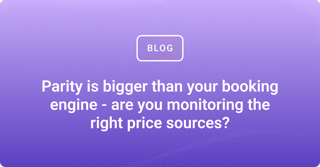
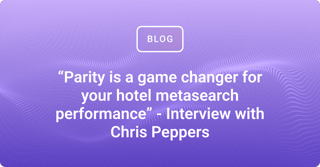


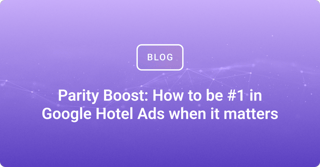
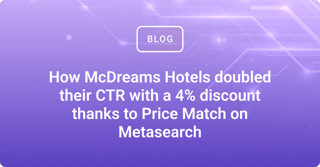

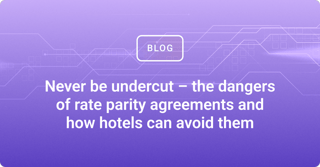
![[WATCH] How hotels can win on Paid Search in 2022](https://www.triptease.com/hs-fs/hubfs/Resources%20-%20feature%20images/Feature-Image_%5B%5BWATCH%5D%20How%20hotels%20can%20win%20on%20Paid%20Search%20in%202022%5D.png?width=320&height=320&name=Feature-Image_%5B%5BWATCH%5D%20How%20hotels%20can%20win%20on%20Paid%20Search%20in%202022%5D.png)